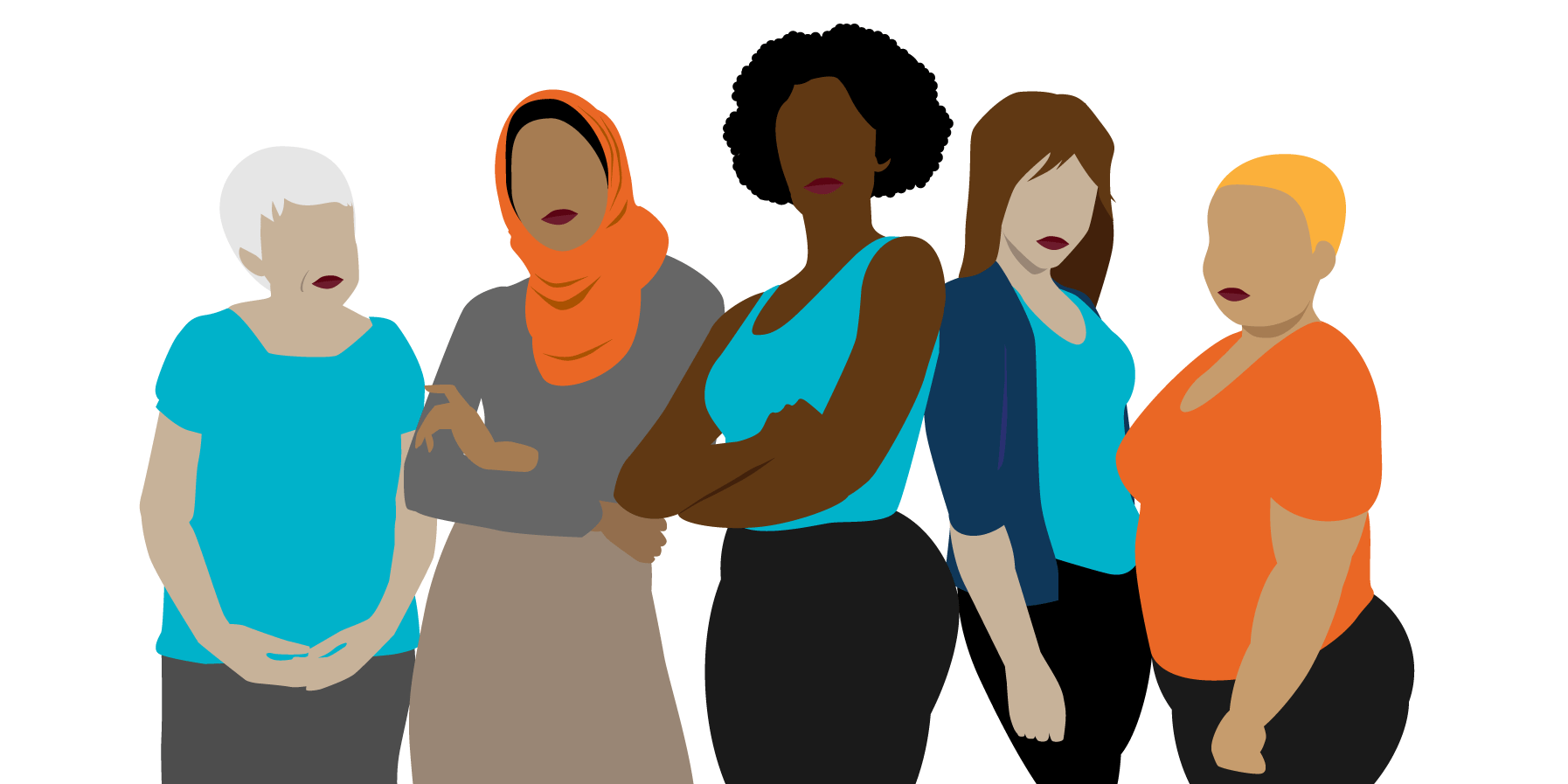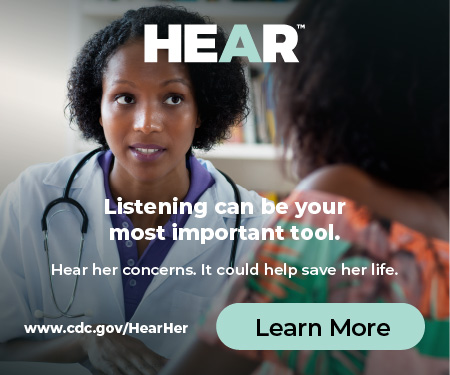Center For Women's Health
A collection of resources and stories enabling Family Physicians and their teams to partner with women* from diverse backgrounds and experiences, encouraging healthy living at all stages of life.

Advanced Life Support in Obstetrics (ALSO)
This evidence-based training program equips maternity care teams with skills to manage obstetric emergencies. This course encourages a standardized team-based approach to improve patient safety and maternal outcomes.
Basic Life Support in Obstetrics (BLSO)
Improve the management of normal deliveries, as well as obstetric emergencies by standardizing the skills of first responders, emergency personnel and maternity care providers.
Fourth Trimester Model of Care
Thinking about postpartum care as a continuum, it begins with prenatal anticipatory guidance and continues with postpartum visits. An ongoing strategy may reduce maternal mortality and morbidity, and improve health for birthing people.
Podcasts
Optimizing postpartum care | Dr. Keyona Oni: Prioritizing Perinatal Mental Health
Optimizing postpartum care | Dr. Beth Oller: Reducing Perinatal Mental Health Stigma
Resources
Family doctors can do C-sections: Tips for securing privileges | AAFP Voices Blog
Postpartum care plan template (PDF) | AAFP
Perinatal mood and anxiety disorders resource for family physicians (PDF) | AAFP
Access to comprehensive, evidenced-based reproductive health care that's safe and affordable is critical to women’s health. Reducing rates of maternal mortality and morbidity depends on maintaining access to quality reproductive care.
Contraception | Emergency Contraception
Evidence-based contraception guidelines and resources can assist you in supporting patients through the decision-making process to determine what care option is best for them.
Abortion Care
Comprehensive reproductive health care is essential to maintaining the health and wellness of women and their families. You can care for the reproductive needs of your patients with support from evidence-based resources for abortion care.
Advocacy Focus: Reproductive Care
The Academy advocates for every patient’s right to health care and for every family physician’s right to practice evidence-based medicine without threat or interference. This includes abortion services and contraception. We work toward safeguarding these rights across numerous policy areas.
Sexual health involves more than preventing and testing for Sexually Transmitted Infections (STIs). Evidence-based, unbiased education about sexual health will help you feel prepared to discuss healthy relationships, consent, and gender identity so your patients feel supported as they navigate their sexual health.
Abuse and Trauma
Understanding how to navigate care when a patient has suffered prior abuse will build trusting relationships with your patients and help you provide the tailored care they need to heal, physically, mentally, and emotionally.
Dysfunction
Sexual wellness and uterine health can pose challenges for many patients. Understanding the broad scope of sexual dysfunction can help you support your patients at every stage.
Sexual Health Education CME in Family Medicine
The sexual health education course improves your ability to discuss a variety of sexual health and family planning topics with your patients. Multiple patient populations are discussed in the sessions including women, men, LGBTQ+, teens, and adolescents.
12.25 AAFP Prescribed Credits
Uterine Health
About 70% of women in the U.S. are diagnosed with uterine fibroids by the time of menopause. In addition, 10% of women of reproductive age are diagnosed with endometriosis.1,2,3 Understanding the difference in “normal” vs “abnormal” menstrual symptoms can empower patients and physicians to discuss and address menstrual health. A recent survey reported that 20% of women do not feel comfortable talking to their healthcare provider about their period.4 Timely discussions regarding menstrual symptoms with physicians and other healthcare clinicians can lead to earlier diagnosis and treatment.
Visit the Uterine Health Guide for patient education tools and resources focused around period health and uterine health conditions.
Uterine Fibroids
While some women with uterine fibroids may experience no symptoms, many will experience symptoms including heavy periods, irregular bleeding between periods, back pain, bladder issues, and difficulties conceiving. It is important to understand how the physical symptoms caused by fibroids can negatively impact a person's overall quality of life.
Endometriosis
Living with this chronic and frequently debilitating condition can pose physical and emotional challenges. Many women face considerable delays in receiving a diagnosis and appropriate treatment, partly due to the societal stigma surrounding menstrual problems. While there is no cure for endometriosis, there are treatments available that can help alleviate symptoms.
Finding the Well for Better Maternity Care
During my experiences as a physician, mom, sister, daughter and friend, I have a front-row seat to many of the unheard struggles unique to women.
Public Health Award: Change, Justice, Equity
It's incredibly rewarding to practice full-scope primary care and also care for patients living with and affected by HIV during pregnancy and through delivery.
Calling for Care: Telehealth Benefits Women
For women, who still tend to shoulder the majority of caregiving responsibilities within their families, the addition of telemedicine has a been a priceless gift.
*A note on gendered language: Although the term “women” is used in this webpage, AAFP recognizes that family physicians treat people of all gender identities, including people who are cisgender, transgender, gender non-binary, or otherwise gender expansive. AAFP believes all people should have equitable access to respectful, high-quality, and safe health care. The use of the term "women" in this webpage is intended to be used inclusively.
References
1. Stewart EA, Cookson CL, Gandolfo RA, Schulze-Rath R. Epidemiology of uterine fibroids: a systematic review. BJOG. 2017;124(10):1501-1512. doi:10.1111/1471-0528.14640.
2. Shafrir AL, Farland LV, Shah DK, et al. Risk for and consequences of endometriosis: a critical epidemiologic review. Best Pract Res Clin Obstet Gynaecol. 2018;51:1-15. doi:10.1016/j.bpobgyn.2018.06.001.
3. Fuldeore MJ, Soliman AM. Prevalence and Symptomatic Burden of Diagnosed Endometriosis in the United States: National Estimates from a Cross-Sectional Survey of 59,411 Women. Gynecol Obstet Invest. 2017;82(5):453-461. doi:10.1159/000452660.
4. State of the cycle. Female Forward Together. Accessed April 2023. https://femaleforwardtogether.com/state-of-the-cycle
